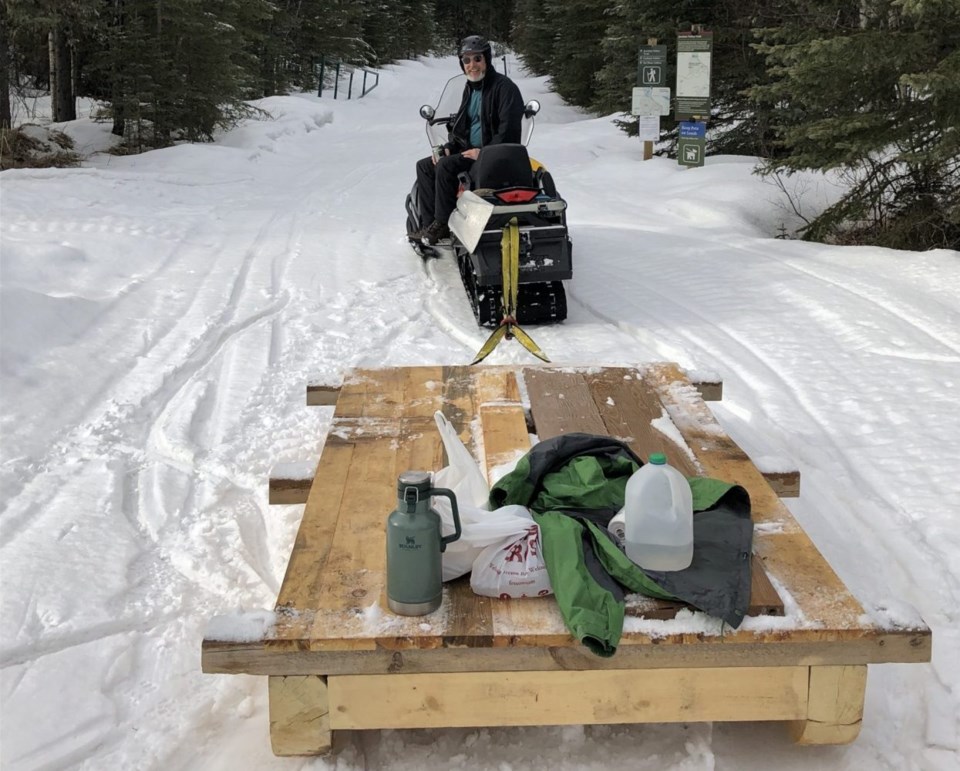Scott Hayes | [email protected]
Local Journalism Initiative Reporter
AlbertaÔÇÖs plans to put two off-highway vehicle (OHV) groups in charge of the provinceÔÇÖs trail system has set off some environmental groupsÔÇÖ alarms.
The two groups to be designated as trail managers are the Alberta Off-Highway Vehicle Association (AOHVA) and the Alberta Snowmobile Association (ASA).
ÔÇťThe biggest priority of these groups is likely to be getting more access to trails and improving the experience for off-highway vehicle users,ÔÇŁ said Devon Earl, conservation specialist with the Alberta Wilderness Association (AWA).
ÔÇťThat can be at the expense of the environment and other environmental users or other recreationists.ÔÇŁ
Minister of Forestry, Parks and Tourism Todd Loewen said that his experience as a lifelong outdoorsman helped him understand how important trails are to Albertans. It also helped inform his decision to support the ongoing work of the two new trail managers through provincial funding.
ÔÇťThis will allow them to create additional recreation and tourism opportunities and larger projects over the coming years,ÔÇŁ he said in a statement.
Part of the announcement included $8 million in provincial funding Budget 2023. It breaks down to $1 million for each organization for this year and for each of the next three years.
The Canadian Parks and Wilderness Society similarly issued a statement that it, just like the AWA, voiced its concerns with appointing third-party trail managers when the Trails Act was first introduced in 2021.
ÔÇťIf this is the route that the provincial government has decided to take, then selection of trail managers and organizations which enter into a trail agreement needs to be a transparent, equitable process,ÔÇŁ said Katie Morrison of CPAWS Southern Alberta. ÔÇťThis will ensure a fair balance between user groups, allowing for a diversity of organizations to be involved in the trail management process.ÔÇŁ
In their new role as trail managers, the two organizations will be accountable for managing a number of provincially-designated snowmobile and off-highway vehicle trails, while also co-ordinating the building and maintaining of trails with local clubs.
Their work must comply with approved applicable land-use plans and ensure that they adhere to the provinceÔÇÖs environmental commitments.
That isnÔÇÖt enough reassurance to the AWA. Earl explained that OHV users comprise a relatively small proportion of all recreationists in Alberta yet they make a really big impact on the environment.
ÔÇťIn many areas, off-highway vehicle use is damaging vegetation, and it creates these trails that can get degraded, and they can get rutted,ÔÇŁ she said.┬á
Doing this can reroute streams and impact water quality, affecting native trout that is already endangered. Motorized recreation in parks also impacts wildlife behaviour, forcing animals such as the grizzly bear to avoid areas because of the noise and human encroachment.
ÔÇťThat can impact their ability to get the food that they need and their ability to survive,ÔÇŁ Earl said. ÔÇťIt has some really far-reaching impacts.ÔÇŁ
At the provinceÔÇÖs announcement, AOHVA president Garett Schmidt tried to assuage those concerns by stating that the move will, in part, help both clubs to mitigate the impacts of recreation while also working to improve the quality of trails.┬á
ÔÇťWe are very pleased to be working in collaboration and partnership with our government to ensure sustainable recreation and having AlbertaÔÇÖs Provincial OHV trail system develop into the world-class recognition and destination,ÔÇŁ he said in a statement.
ASA president Chris Brookes added that his organization has been maintaining a snowmobile trail network since 1971 using its own resources. TheyÔÇÖve been in talks with various provincial governments working toward this legislation that formalizes a recognition of their hard work over the last 15 years.
ÔÇťWe've been sustaining the trail network on volunteer dollars and grants for 50-plus years. This is long overdue, and it's something we've been working on for literally decades.ÔÇŁ
Snowmobile registration fees cost $56 per year, he added, even though snowmobile riders donÔÇÖt use┬á highways or any other public infrastructure.┬á
ÔÇťIt was really a tax that was contributing nothing back to the user,ÔÇŁ Brookes said. ÔÇťOstensibly, we get to maintain our system and keep maintaining the trails but with these dollars coming back to the publicly accessible trails.ÔÇŁ




